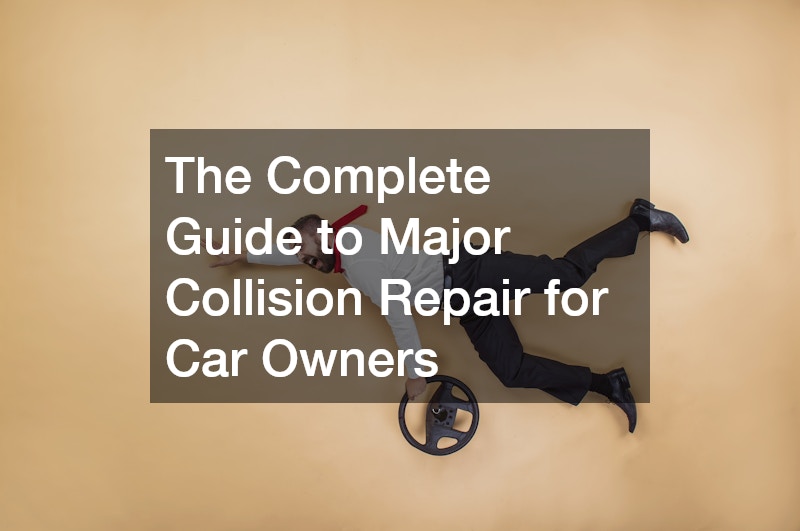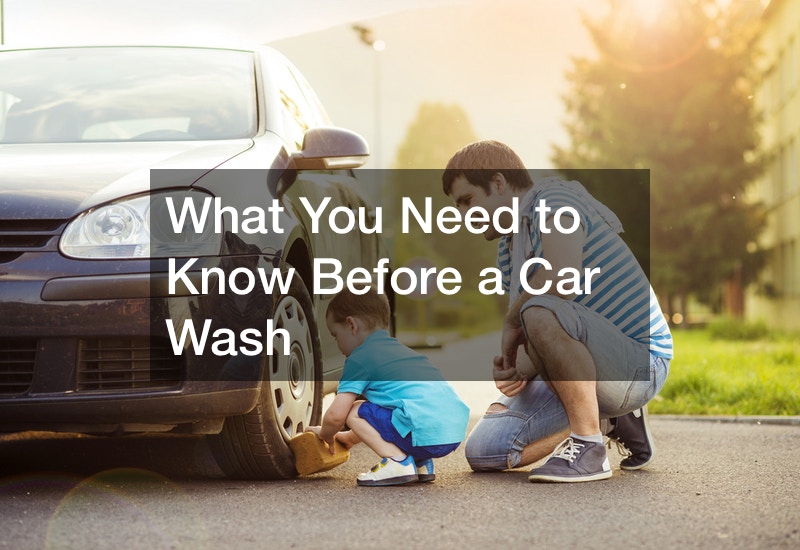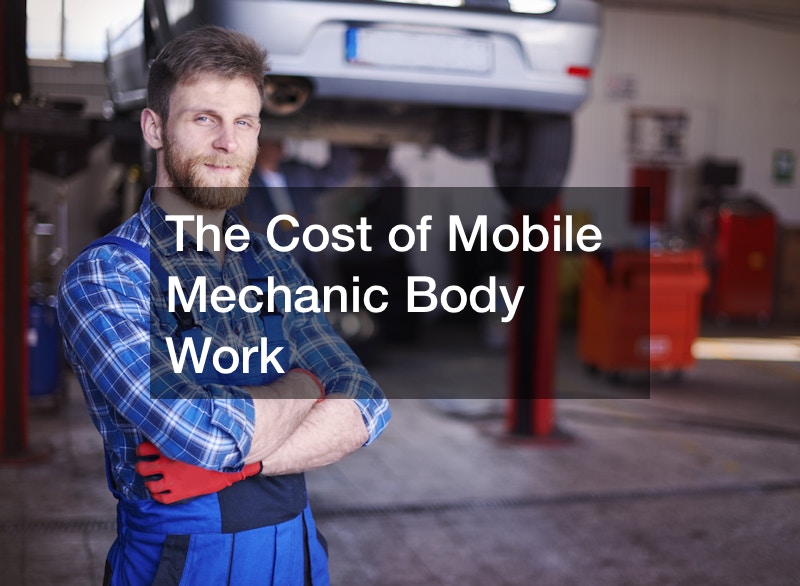
Experiencing a major collision can be a daunting event for any car owner. Whether it’s a minor fender bender or an intense crash, the process of restoring your vehicle to its original condition begins with understanding what major collision repair entails. This extensive guide will walk you through the entire process, provide tips on choosing an auto body shop, and discuss strategies to help you navigate the post-collision aftermath effectively.
From dealing with insurance claims to selecting the right auto body refinishing services, there are numerous elements involved in the journey from accident to revitalization. Each stage offers different challenges and decisions, but with the right knowledge and assistance, the path can be smoother. As you prepare for your vehicle’s recovery, consider this guide your go-to resource for ensuring a seamless repair experience.
In this article, we’ll focus on understanding the entire auto collision repair process, discuss the benefits of working with local towing services, and offer insights into choosing between new and used auto parts. By the end, you’ll be well-equipped to handle whatever comes your way when dealing with a major collision.

Understanding the Major Collision Repair Process from Start to Finish
When a major collision occurs, the first step in the repair process is assessing the damage. This comprehensive evaluation ensures that all visible and hidden issues are identified for effective repair. Auto body shops usually use specialized tools and techniques, such as computerized measuring systems, to assess structural damage accurately.
Once the damage assessment is complete, the repair plan begins. This plan outlines the necessary steps and timelines for the repairs, providing a roadmap until the vehicle is fully restored. Parts ordering, panel repairs, and structural rectifications are among the typical stages in this phase.
Finally, quality control checks are conducted to guarantee that the vehicle meets industry standards. These checks include road testing and alignment verifications, ensuring the car’s structural integrity and performance are uncompromised. Thus, a thorough understanding of this process is crucial for vehicle owners facing a significant accident repair.

Choosing the Right Auto Body Shop for Repairs
Selecting an ideal provider for local auto repairs can significantly impact the quality of your major collision repair. Consider shops with accreditations from reputable bodies, as it often signifies adherence to industry standards. It’s essential to ensure that the shop uses quality equipment and materials, which can greatly influence the repair outcome.
Customer reviews are another critical factor when choosing an auto body shop. They provide insights into previous clients’ experiences and reveal the shop’s reliability and quality of service. Consistent positive feedback may highlight abilities in areas like timely delivery & effective communications.
Finally, don’t hesitate to ask questions. Inquiring about warranty offerings, repair timelines, and the shop’s certification can help you make an informed choice. Ensuring clarity on these topics will prevent misunderstandings and ensure your vehicle gets the care it deserves.
Key Steps in Auto Collision Repair Every Car Owner Should Know
Understanding the key steps in auto collision repair can empower car owners to make informed decisions throughout the process. The initial phase involves damage assessment and estimation, which includes determining repair costs and timeframes according to the extent of the damage. Accurate damage estimates facilitate streamlined insurance claims and repair planning.
The next critical step is disassembly, where components are removed for access to damaged areas. This stage also identifies additional unseen damages, ensuring comprehensive repair planning. Proper disassembly is crucial for precise alignment and ensures the structural integrity of the vehicle post-repair.
Reassembly and final inspection signify approaching completion. During reassembly, the car is put back together, ensuring that all parts fit correctly and function properly. A thorough inspection follows, focusing on performance and safety tests to guarantee the vehicle’s readiness for the road.

When to Consider Used Auto Parts for a Cost-Effective Repair
Used auto parts can be an economical option during a major collision repair when cost is a concern. They often provide significant savings compared to brand-new parts without compromising quality. It’s crucial to ensure the parts are sourced from reliable vendors, offering warranties to back their sales to ensure longevity.
Deciding when to use used auto parts depends largely on the type of part and its role in the car’s safety and performance. Non-vital aesthetic parts, such as trimming or moldings, are often replaced with used parts, whereas critical components require greater scrutiny. Assessing the condition and compatibility of these parts is paramount for safety assurance.
Effectively utilizing used auto parts also requires an understanding of their installation process. Engaging with a knowledgeable auto body shop can ensure proper installation, thereby maintaining vehicle integrity. Subsequently, used auto parts become a viable option, balancing quality with affordability.
How Local Towing Services Can Help After a Major Accident
After a major collision, immediate assistance from local towing services can be invaluable. These services ensure a swift response, getting your vehicle safely removed from the accident scene to a repair facility. Having a local towing service on hand can provide peace of mind during the stressful aftermath of a collision.
Choosing a reliable towing service is essential, as not all offer the same quality of service. Look for companies renowned for their punctuality and professional handling of vehicles to avoid additional damage during transport. Many auto body shops forge partnerships with dependable local towing services, making them convenient options.
In addition to transportation, some local towing services also offer guidance during insurance claims processing. Their industry knowledge can assist in documenting collision details accurately, which can expedite your claims process. Therefore, a well-selected towing service can provide essential support beyond transporting your vehicle.
The Role of Auto Detailing in Restoring Your Car After Major Repairs
Post-repair, auto detailing plays a pivotal role in reinstating your vehicle’s aesthetic appeal and functionality. Auto detailing encompasses a range of services, including thorough cleaning, polishing, and waxing, which enhance the vehicle’s exterior finish. This comprehensive care not only elevates the car’s appearance but also boosts its value.
Interior detailing involves cleaning and conditioning upholstery, carpets, and dashboards to eliminate any residue from collisions and repairs. It ensures a fresh environment for car occupants and retains the vehicle’s interior integrity. Regular detailing post-repair sustains cleanliness and extends the life of interior materials.
Routine detailing can also highlight any minor imperfections or issues that may have been missed during the repair process. Detecting these early can prevent larger problems in the future, ensuring the sustained performance and value of your vehicle. Thus, incorporating auto detailing into your post-major collision repair routine is beneficial.
Auto Body Refinishing Techniques to Make Your Car Look Like New
The process of auto body refinishing is essential for achieving a seamless exterior appearance after major collision repair. It involves stripping the old paint, repairing body surface imperfections, and applying a fresh coat of paint to match the original aesthetics. Professional refinishing ensures the repaired areas blend flawlessly with the existing structure.
Several techniques underpin successful auto body refinishing, including sanding, color-matching, and clear coating. Sanding creates a smooth surface for paint application, while color-matching ensures consistency with the unblemished portions of the vehicle. Clear coating adds a protective layer, enhancing durability and luminosity.
Proper execution of these techniques requires skilled technicians equipped with advanced tools. Opting for reputable auto body refinishing services assures precision and high-quality results, restoring your vehicle’s showroom shine. Consequently, investing in professional auto body refinishing is vital for a superior finish after major repairs.

Tips for Finding Reliable Local Car Body Repairs for Major Collisions
Finding reliable local car body repairs is fundamental for ensuring quality outcomes in major collision repairs. Begin by researching reputable shops in your vicinity with proven track records in delivering consistent quality services. Recommendations from friends or online reviews can be invaluable resources in identifying trustworthy establishments.
Consider visiting potential shops for firsthand assessments. Observe the facility’s cleanliness, the professionalism of staff, and the range of services offered. A well-maintained shop with courteous staff often indicates a commitment to quality and customer satisfaction.
Also, evaluate the shop’s communication practices. Reliable auto body shops keep clients informed throughout the repair process, enhancing transparency and trust. By following these tips, you can choose a local shop aligned with your repair needs, ensuring functional and aesthetic restoration for your vehicle.
When Major Collision Repair Involves Transmission Assessment
In some cases, major collision repair extends beyond visible body damage to include mechanical assessments, such as the transmission. Automatic transmissions can suffer damage in high-speed collisions due to sudden jolts and impact forces. Therefore, a thorough transmission check is imperative, ensuring the preservation of the vehicle’s driving performance.
Transmission inspections involve checking for leaks, unusual noises, and road testing to assess operational integrity. Any signs of misalignment or fluid leakage warrant immediate attention to prevent further mechanical deterioration. Timely identification and resolution of transmission issues contribute to the overall safety of the vehicle post-repair.
Engaging with a qualified repair shop proficient in both body and mechanical repairs ensures comprehensive vehicle recovery. Such shops offer a holistic approach, addressing both visible and functional elements, ultimately restoring the car’s full operability. Thus, ensuring an automatic transmission assessment acts as a safeguard within major collision repairs.
Auto Hail Damage: What It Is and How It Differs from Collision Damage
Auto hail damage, while sometimes confused with collision damage, is distinctive in its nature and repair approach. Hail impacts create small dents and dimples across a vehicle’s body, primarily affecting the roof, hood, and trunk areas. Unlike collision damage, hail typically doesn’t compromise structural integrity, but it does affect aesthetics.
Repairing hail damage often involves paintless dent repair (PDR) techniques. PDR enables effective correction of dents without needing to repaint or fill in scratches, preserving the original finish. In contrast, collision repairs might necessitate more invasive methods, including replacing panels or frame straightening.
Auto shops specializing in both collision and auto hail repairs can provide tailored solutions for each damage type. Their expertise in assessing and handling both scenarios ensures the vehicle receives the right care and treatments. Understanding these differences enhances decision-making following any damage event, ensuring longevity and appearance for your vehicle.
How to Choose Between New and Used Parts for Major Collision Repair
Choosing between new and used parts for major collision repair involves weighing several factors. Primarily, consider the role of the part in the vehicle’s operation and safety. Parts that are critical to safety, such as brakes and airbags, should generally be new to ensure optimal reliability.
Non-essential components, like door mirrors or interior trims, may effectively be replaced with used parts. Sourcing from reputable suppliers or certified auto body shops can ensure these parts meet necessary quality standards. The key is purchasing used parts with a solid warranty and a verified background.
Cost constraints and part availability may also steer decisions. Budgetary considerations often make used parts attractive, especially when repairs require a large number of replacements. Discussing these options with your chosen repair shop can provide clarity and guide you towards the most suitable choice for your repair needs.
What to Expect from Your Auto Body Shop During a Major Repair
Understanding what to expect from your auto body shop during a major repair can streamline your experience and set realistic expectations. Communication is key, as reputable shops will offer regular updates on repair progress. This helps avoid uncertainties and builds trust in their services.
Professionalism at the repair shop is another expectation. From estimations to final inspections, technicians should exercise competence and diligence. This professionalism ensures that repairs not only meet visual standards but also uphold safety standards.
Lastly, a guarantee or warranty on repair work is a mark of confidence in service quality. It provides peace of mind and exposes a commitment to client satisfaction by safeguarding against potential issues post-repair. Insisting on these assurances creates a valuable partnership between the vehicle owner and the repair facility.
Important Questions to Ask About Auto Body Refinishing Services
When embarking on auto body refinishing services, there are crucial inquiries to make to ensure satisfactory results. Start by asking about the types of paints and materials used. High-quality materials can resist fading and deterioration, maintaining a vibrant look for longer.
Next, assess the training and experience of technicians handling your vehicle. Skilled professionals are more likely to achieve a seamless finish and detect potential issues early on. This leads to a higher standard of workmanship in the final product.
Finally, don’t forget to inquire about the warranty they offer. A solid warranty indicates a commitment to providing superior service and instills confidence in the repair work. By asking these questions, you can secure a refinishing service that ensures both beauty and persistence for your vehicle.
Equipping yourself with knowledge about the major collision repair process transforms a daunting experience into a manageable task. From understanding the roles of local towing services and thorough evaluations to the final stages of auto body refinishing, each component plays an essential role in restoring your vehicle. Selecting a reliable auto body shop and utilizing used or new parts appropriately can further optimize the repair process.
Auto detailing ensures that attention to detail is given, enhancing both the aesthetic and structural aspects. Understanding auto hail damage differentials and ensuring proper transmission assessments are equally vital, safeguarding your vehicle on all fronts. This comprehensive guide aims to support you in navigating the complex world of major collision repair with confidence.
By leveraging this knowledge, vehicle owners can maintain their cars’ safety, functionality, and appearance post-collision. It’s not only about restoring a car but also ensuring peace of mind and secure journeys ahead. With these insights, you’re prepared to tackle the exigencies of major collision repairs with greater assurance.



